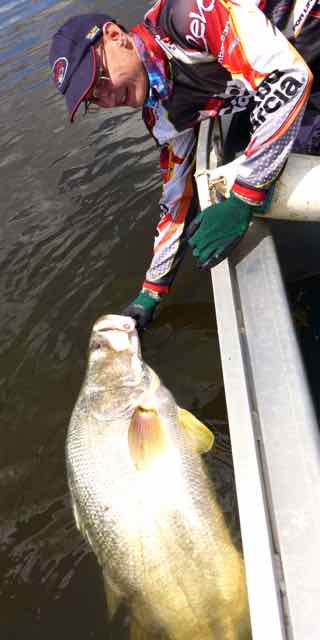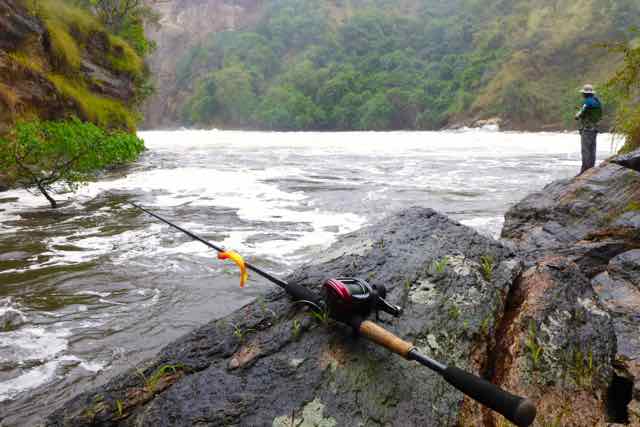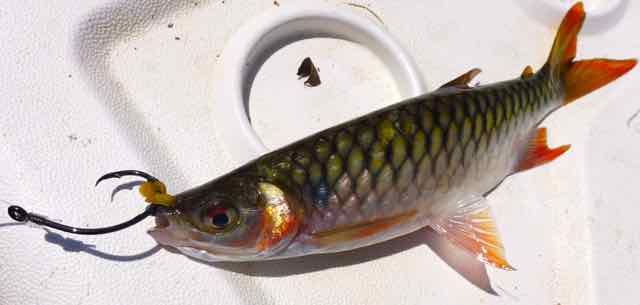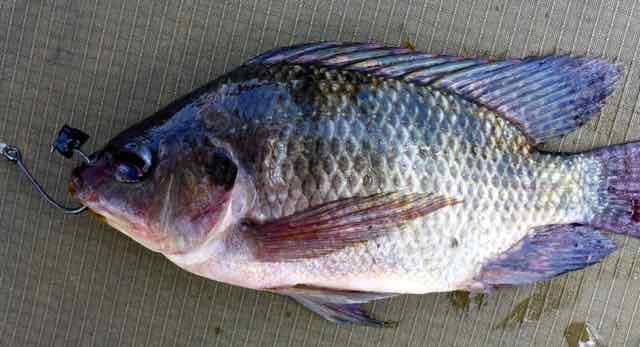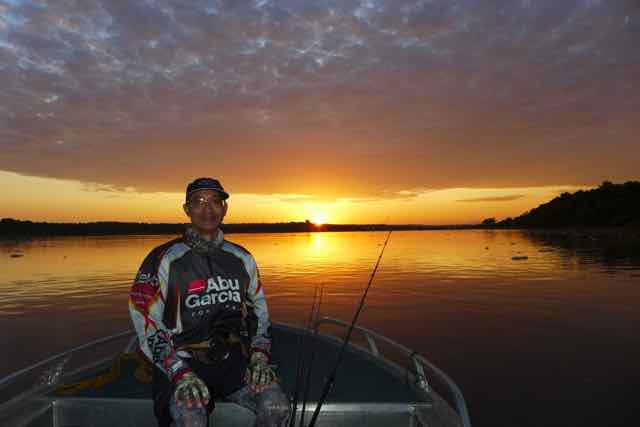
Livebait
gathering for Nile perch at
Murchison
Falls, Uganda, Africa
By Christopher S.G. Tan
Catching live bait for Nile perch is done first thing in the morning. Tilapia are caught using earthworms, when the water level is low. There are low-lying muddy islands exposed where the guide will go and dig for earthworms in the soft wet soil.
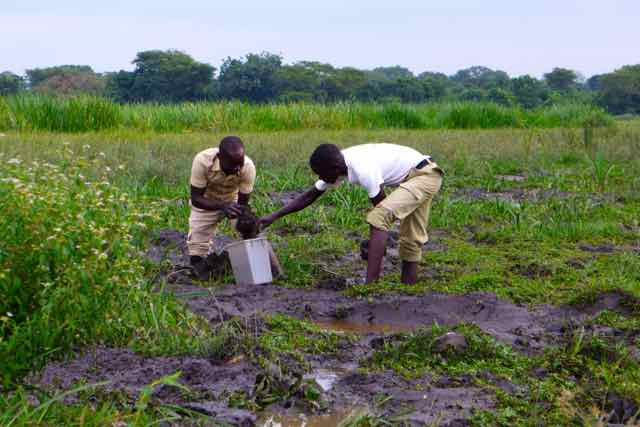
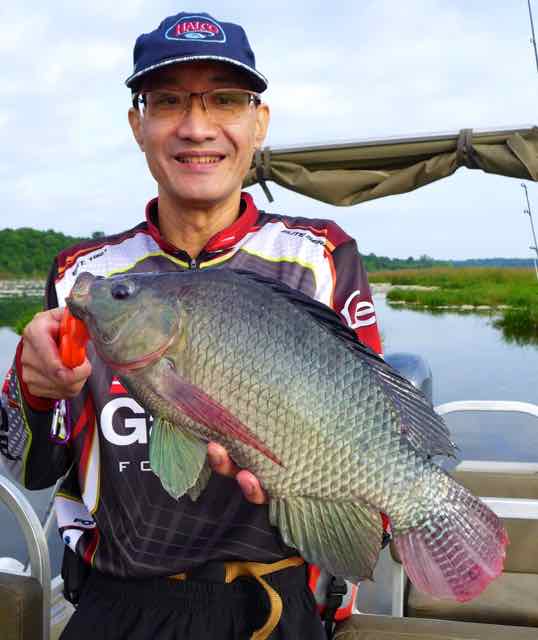
Further upstream on the way to Murchison Falls there are some islands with small, shallow lagoons in them that are teeming with tilapia. Simple, light gear with a small hook, split shot and a float is used to catch the tilapia. The water is only half a metre deep or less here. The bait is cast near or in between the grass patches or edges. Once enough tilapia are caught, it is time to head upstream to fish for Nile perch.
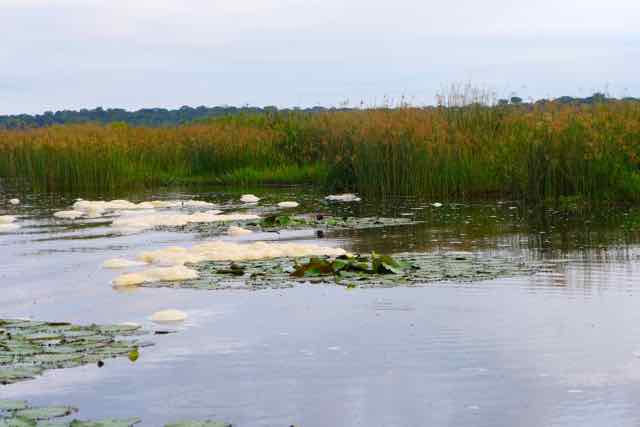
When the water level is higher, flooding the muddy islands where the earthworms are caught and the islands with lagoons holding tilapia, different bait are caught. These are mainly the Awaka (True large scale tetra), and the odd Nsoga (Nurse tetra) and Egyptian Robber (Ngara). They were caught at the lower sections of the river where there are a lot of trees by the bankside.

The same tackle rig is used, but the bait used is canned sweetcorn. I am told synthetic bait like the Berkley Powerbait Trout Bait works too.
My personally preferred method of rigging the livebait is a bridle rig with a rubberband to allow the hook to stand clear of the livebait. The local guides use the simpler method of hooking the livebait directly on the hook. They both work.
Other
links:-
The
Tackle
for Nile perch - rods, reels, lines, leaders and terminal
tackle.
Conservation
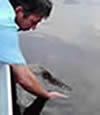
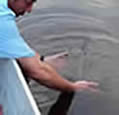
We need to protect and conserve our resources by practising catch and release of our sportfish and protecting the habitat of our fishes.
